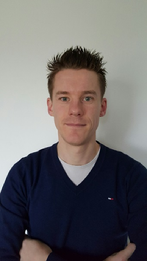 In this thesis a microscopy design is demonstrated, containing a high resonance atomic force microscopy (AFM) scanner together with high bandwidth scanning probe microscopy (SPM) electronics. ‘This is a major step towards real-time growth monitoring during pulsed laser deposition of oxides,’ Werner Wessels says.
In this thesis a microscopy design is demonstrated, containing a high resonance atomic force microscopy (AFM) scanner together with high bandwidth scanning probe microscopy (SPM) electronics. ‘This is a major step towards real-time growth monitoring during pulsed laser deposition of oxides,’ Werner Wessels says.
The AFM is capable of operating under severe conditions: 10-6-1 mbar O2, at temperatures up to 700 °C. A proof of principle is shown by imaging the growth of BiFeO3 islands under PLD conditions with (sub)nanometer height resolution.
‘For quasi real-time growth observations, the bandwidth of the detection system still needs to be increased,’ Werner says. ‘Furthermore, increasing the damping and resonance frequency lowers the response time of the AFM cantilever.’ This PhD work is distinctive from other thesis projects, Werner assumes. ‘A major part of the PhD work was on building equipment and the experimental setup,’ he says. ‘After this, serious test procedures followed.
Finally we were able to image in situ BiFeO3 PLD growth. It was well worth it: we gained fundamental knowledge on some key phenomena taking place in this highly interesting field of research.’
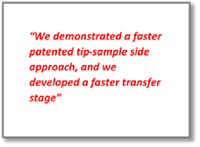
For quasi real-time monitoring oxide growth, it is required to quickly approach the AFM tip on the sample as the traditional tip-sample approach is a tedious procedure.
‘We demonstrated a faster patented tip-sample side approach, and we developed a faster transfer stage,’ Werner Wessels says. ‘To study the PLD growth kinetics, tip and sample should approach in a short notion of time. All of these steps could be realized from some seconds unto several sub-seconds. Above that, we were able to reduce the reposition repeatability error unto 60 nanometer, for the next process steps to be taken with high accuracy.’
Combining techniques
Also reflection high-energy electron diffraction (RHEED) was used. This technique is especially useful describing perovskite oxide surfaces and monitoring of PLD growth.
Werner: ‘Refining and speeding up related microscopy techniques, and combining them with diffraction techniques, lead to new insights in the subtle phenomena involved. It was a happy moment when I was able to actually capture the first images during growth.’
Collaboration
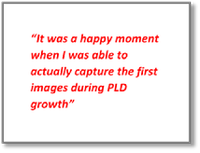
Apart from the research skills Werner developed deep knowledge on modern AFM and other scanning probe microscopy techniques. He also stresses the importance of learning to cooperate with various partners within complex projects.
‘For example on the high speed SPM electronics, we collaborated with a specialized spin-off company,’ he says. ‘Communicating on these high-tech issues and really making sure the SPM electronics would be realized, was one of the great competences I gained during the PhD project. Within Mesa+ I collaborated with professor Harold Zandvliet Physics, leader of the Physics of Interfaces and Nanomaterials Group. Furthermore, the collaboration with technicians from other research groups was of prime importance in different development phases. When one is looking for collaboration in an open and active manner, the right collaboration partners can be found within Mesa+.’
R&D team
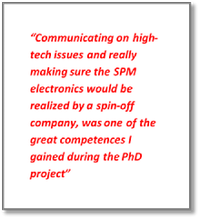
Werner is now working at Twentsche Kabelfabriek, located in Lochem, in the region of Twente, within the Eastern part of the Netherlands. He is a member of the Research & Development Team.
Werner: ‘It is a small group of seven engineers and experts, from different subject areas and educational levels. On complex subsea high-power cables - in which optic fibers are present as well – we come up with new designs in order to guarantee the functional requirements, even when the cables are transported, constructed on the site, and function for many years under severe process conditions.’
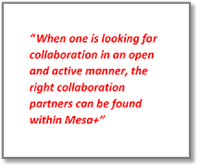
‘Because the production facilities are recently renewed, we are now collaboratively working towards a new application market, growing as a strong team altogether. Customers contacts are really intense sometimes. When experts come to visit our fabrication and development sites, in a short notion of time we seek and find new designs, fabricate these, and critically test the new product ideas. I really enjoy this work conception.’
